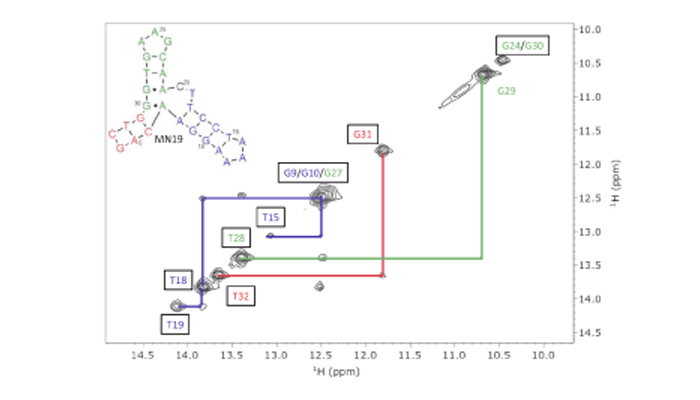
NMR for non-experts; a practical guide for applying NMR methods in studies of aptamer-ligand interactions
METHOD/PROTOCOL
![]()
ISSN: 2514-3247
Aptamers (2020), Vol 4, 03-09
Published online: 29 September 2020
Full Text (Churcher ~895kb) | (PubMed Central Record HTML) | (PubMed) | (References)
Zachary R Churcher and Philip E Johnson*
Department of Chemistry and Centre for Research on Biomolecular Interactions, York University, Toronto, Ontario, Canada, M2R 1A1
*Correspondence to: Philip Johnson, Email: pjohnson@yorku.ca, Tel: +1 416 736 2100 x33119
Received: 17 June 2020 | Revised: 23 September 2020 | Accepted: 29 September 2020
© Copyright The Author(s). This is an open access article, published under the terms of the Creative Commons Attribution Non-Commercial License (http://creativecommons.org/licenses/by-nc/4.0). This license permits non-commercial use, distribution and reproduction of this article, provided the original work is appropriately acknowledged, with correct citation details.
ABSTRACT
Nuclear Magnetic Resonance (NMR) Spectroscopy is a powerful technique for studying aptamer structure and function. Important information about ligand binding and how binding affects aptamer structure can be obtained relatively quickly using 1H NMR spectra focused on the imino resonances. Here we summarise some practical information for preparing aptamer samples for NMR analysis, designing experiments, and interpreting results, with an emphasis on aptamer-small molecule interactions.
KEYWORDS: Aptamers, Nuclear Magnetic Resonance Spectroscopy, folding, small molecule interactions
